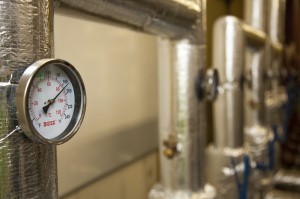Bristol’s pioneering heat network system, a key element in the city achieving carbon neutrality by 2030, has received further investment to extend it to key development areas.
The existing network – which uses a number of different methods of extracting waste heat, including from the Floating Harbour – already serves an area stretching from Redcliff to Temple and parts of Old Market.
Now a £1.7m investment through the government’s Heat Networks Investment Project (HNIP) will extend it to the Temple Island regeneration area and the University of Bristol’s Temple Quarter Enterprise Campus, which is now under construction.
The funding will support the development of a new network that will use a combination of heat pump technologies to provide low-carbon heat to hundreds of local homes and businesses, as well as student housing, university buildings and education facilities.
The technology mix will include a ground source heat pump using a local sandstone aquifer, a water source heat pump using the Floating Harbour and extracting waste heat from the university buildings themselves.
As well as producing fewer carbon emissions, the network is more efficient and cost-effective to run, protecting against rises in gas prices.
Bristol City Council was previously awarded funding through the scheme in its earlier funding rounds for the development of heat networks in the city.
Council cabinet member for climate, ecology, energy and waste, Cllr Nicola Beech, pictured, said: “The Bristol Heat Network is an integral part of our strategy for decarbonising the city and ensuring that Bristol continues to play its part in addressing the climate crisis.
“The council has invested over £60m in low-carbon and renewable infrastructure in recent years and we’re delighted to be working in partnership on this innovative project.
“It’s exciting to be replacing old technology with greener solutions and great to be supporting businesses and public sector partners with their own efforts to decarbonise.
“Developing the heat networks has so many benefits for the city including the reduction in fuel poverty, cutting carbon emissions and creating thousands of jobs to support the local economy.”
The announcement follows the recent publication of the Heat and Buildings Strategy, which placed a particular emphasis on the use of heat pumps in the delivery of low carbon heat.
The University of Bristol’s £300m, seven-acre Temple Quarter Enterprise Campus on the former Post Office sorting office site next to Temple Meads railway station us due to open in 2025, having been put back three years due to the pandemic.
It will be home to a number of state-of-the-art academic buildings, including the Bristol Digital Futures Institute, the Quantum Technology Innovation Centre, and the Bristol Inclusive Economy Initiative, plus 3,000 students and 800 staff.
Last year insurance giant Legal and General agreed terms with the city council to build a hotel, conference centre and 550 new homes on Temple Island, a site previously earmarked for the Bristol Arena.





























